The 2023 Nissan GT-R Premium Is a Supercar Time Capsule
The date my road test was published in the Orlando Sentinel—April 19, 2008—confirms that it has been nearly 16 years since I first drove a 2009 Nissan GT-R, the introductory model for the R35-generation of this momentous supercar. Having just spent a week in a 2023 GT-R, one thing is clear: The Nissan has aged better than I.
The 2023 GT-R makes the same mildly disconcerting click, pop, and clunk noises as always, especially at low speeds. But over the years the noises have gotten quieter, more muffled. When I get out of bed in the morning, my bones go click, pop, and clunk, but I’m pretty sure they are getting louder.
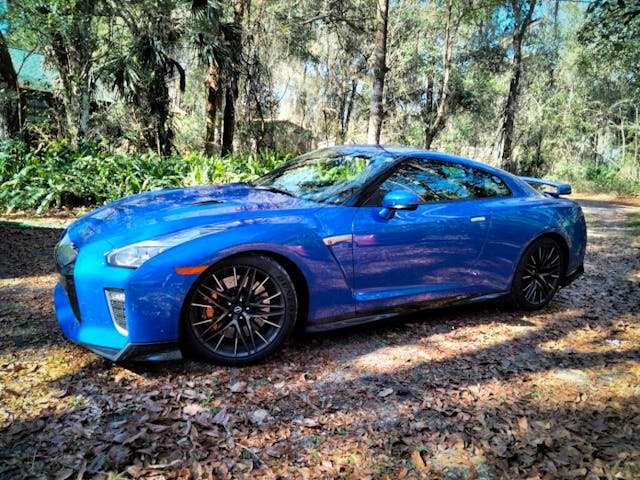
Despite multiple updates over the years, it really is astounding how much the GT-R hasn’t changed. The basics are still there: a 3.8-liter, twin-turbocharged V-6; a six-speed, dual-clutch transmission; all-wheel-drive. And the “Godzilla” nickname beloved by the GT-R faithful endures.
The R35 even retains its hydraulic power steering and a center-console-mounted, mechanical parking brake. That piece of anachronism is sort of endearing, but I don’t miss the old steering wheel; the 2023 setup feels better than ever. Nissan has teased us periodically with rumors of an upcoming R36-generation GT-R, but we’re not holding our breath just yet. Nissan likes to hang onto its sports car platforms for a long time; the 370Z, for instance, debuted as a 2009 model and stuck around until 2020. (You can read our review of the 2024 Z Nismo here.)
The 2009 GT-R I drove, as well as the 2023 model, was fitted in Premium trim, which has accounted for the vast majority of sales for the car over the years. In 2009, the GT-R Premium wore a $71,900 MSRP (about $103,000 today), assuming you could get one at sticker price, a problem then and now. Its value has held up pretty well: In #3, or “Good” condition, Hagerty values the car today at $52,700. That’s a little less than the value of a 2009 Porsche Carrera 4S, which Hagerty says is $59,000. But the 2009 Carrera 4S had a base price of $92,300.
Marketplace
Buy and sell classics with confidence
GT-R prices have gone up since 2009 (what prices haven’t?) The test car I had for a 2013 drive cost $96,820, and for a 2018 test, $110,400. This 2023 Premium started at $116,040. As it was in 2018, shipping for the new model is still $1895—pricey then but closer to the norm now.
The 2023 GT-R I drove had three options: $1000 for the paint (a lovely Bayside Blue), $490 for floor mats, a first-aid kit, and USB charging cables; and $4280 for “hand-stitched, semi-aniline” leather upholstery, which was nice but not that nice. Base seats are “leather-appointed with synthetic suede inserts,” which I’d wager are fine.
Specs: 2023 Nissan GT-R Premium
- Price: $116,040 / $123,705 (base/as-tested)
- Powertrain: 3.8-liter twin-turbocharged V-6; 6-speed dual-clutch automatic transmission
- Horsepower: 565 @ 6800 rpm
- Torque: 467 lb-ft @ 3300 rpm
- Layout: Front-engine, all-wheel-drive, two-door, four-passenger coupe
- Weight: 3935 lbs.
- EPA-Rated Fuel Economy: 16/22/18 mpg (city/hwy/combined)
- 0–60 mph: 3.1 seconds
Those front seats, which have cutouts in the back for a racing harness, were very comfortable, even for a 275-mile day. I’m six feet tall, and moving the front seat back to where it felt comfortable left zero space for legroom in the rear seat. Yes, it’s theoretically a four-passenger car, but rear-seat passengers had best hope for a brief trip.
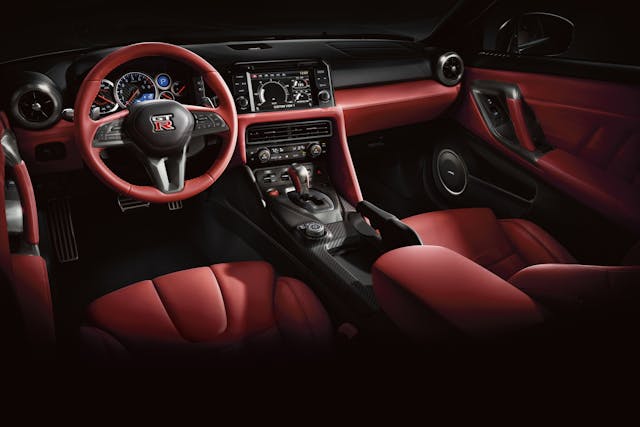
Instruments and controls were updated with the 2017 freshening, eliminating 16 buttons and switches, and they are basically the same as they were then. The smallish (by today’s standards) eight-inch center display calls up the various performance pages, of which there are many, some a bit redundant. There has always been a computer-game feel to the GT-R: After all, knowledge of this Skyline-based model essentially debuted to America as part of the groundbreaking Gran Turismo video game in 1997, four years before the Fast and Furious craze made the GT-R even more famous. (Or to some, infamous.) The GT-R is still profoundly digital, but Nissan has toned it down. And most cars today—EVs especially—are even more digital in both essence and user experience.
Despite the use of lightweight materials—the hood, trunk lid, and doors are aluminum—and some carbon fiber, this remains a very heavy car at 3935 pounds. A base Chevrolet Corvette weighs 3366 pounds, and even the Corvette E-Ray weighs just 3774 pounds. The sticky Dunlop tires, 255/40ZRF20 up front, 285/35ZRF20 in the rear, work in concert with the Bilstein DampTronic shocks and the rest of the taut suspension, along with excellent Brembo brakes (they say “Nissan,” but they are Brembos) to help make you forget that the GT-R weighs two tons. And fill up the 19.5-gallon gas tank—with 93-octane premium, please—and you add about 120 pounds to the weight of the car.
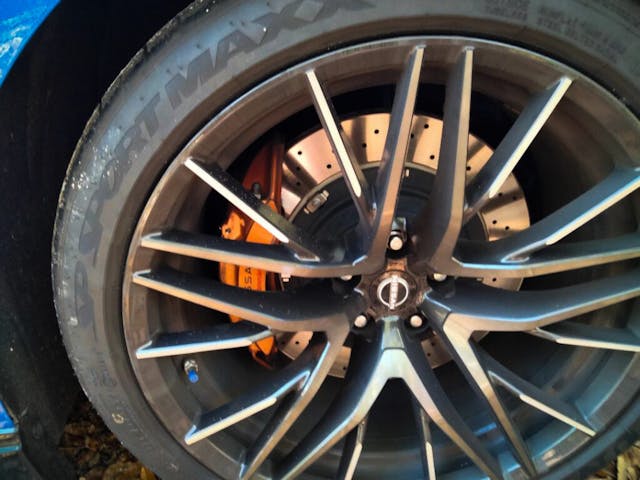
Speaking of those sticky Dunlop Sports Maxx GT600 run-flat tires, there is a stifling amount of road noise, especially on concrete pavement, even with the active noise cancellation and added soundproofing, plus the acoustic-glass windshield, all of which have been around since the 2017 refresh. The noise is taxing on longer drives, likely causing you to crank up the 11-speaker Bose sound system to help drown it out.
The powertrain—that 565-horsepower V-6 and six-speed automatic transaxle—are fundamentally what we got for 2009, except then with 480 advertised horsepower. Most of us who drove the GT-R at that first press event, held at the modest Reno-Fernley Raceway in Nevada, were convinced that Nissan was under-reporting the horsepower then, by maybe 25 or 30, and independent tests since then have confirmed it.
The engine is a masterpiece, each hand-built by a single craftsman in Japan, complete with a nameplate. Tsunemi Oyama built the engine in this 2023 GT-R; a veteran of over four decades at Nissan, he and the other four GT-R engine builders have become celebrities among the car’s substantial fan base. The quick-shifting transmission is also built by a handful of craftsmen: There are steering wheel-mounted paddles, but the computer-directed shifts are faster. Engine sound is piped through a titanium exhaust system.
Then and now, the GT-R is a guided missile, a point-and-shoot car that works very hard to make you look good. Recall that the GT-R was introduced at about the same time as the second-generation, 450-horsepower Dodge Viper. As much as I loved the Viper, you had to work twice as hard to go not quite as fast as the GT-R on a racetrack, which appealed to me but not to a lot of my colleagues at the time, who insisted that all the computer aids on the GT-R made driving on a racetrack too easy. Somehow that was less valiant. The GT-R hasn’t changed much but other modern sports cars sure have, and most come with as many (or more) technological aids as the GT-R.
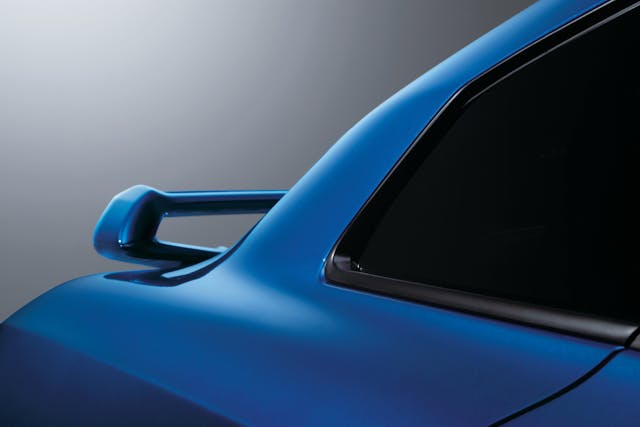
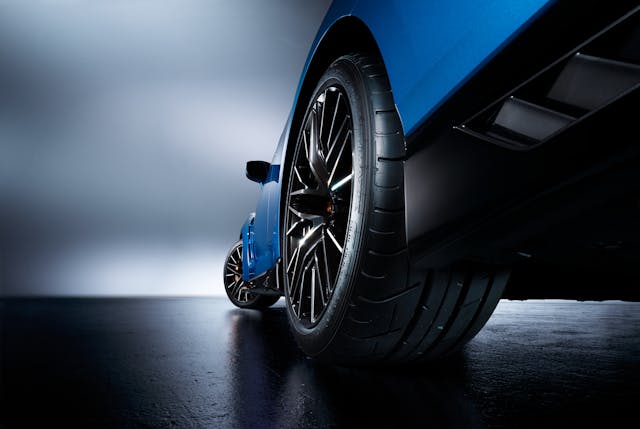
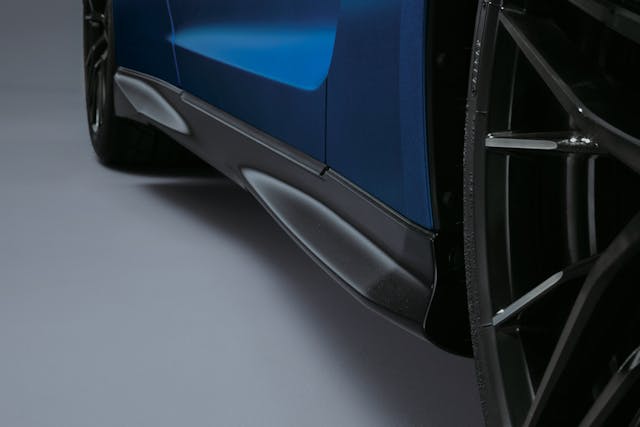

The 2024 Nissan GT-R should be arriving at dealerships in the next few weeks. It shows off a mild makeover, including restyled front and rear fascias, a new rear-wing design, plus the usual smaller enhancements, such as using a thinner mesh in the grille to reduce drag. The T-Spec model returns, with carbon-ceramic brake rotors from the 600-horsepower NISMO model, gold-painted Rays wheels, and two colors from the past: Millenium Jade and Midnight Purple, from the R34 GT-R era. The powertrain is a holdover from the 2023 driven here, which is kind of a holdover from 2009.
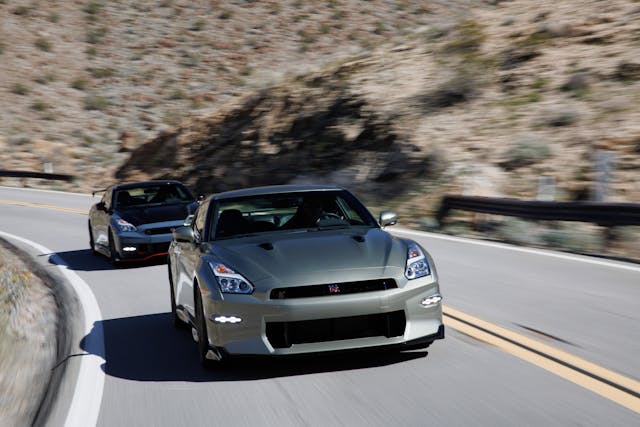
Starting price on the 2024 GT-R Premium is $121,090; for the T-Spec, $141,090; and for the NISMO, a whopping $221,090. The 600-horsepower 2015 GT-R NISMO I drove at Homestead-Miami Speedway listed for about $151,000, so that’s a lot of inflation.
Nissan only sold 390 GT-Rs in all of 2023. I’m not sure how they continue to justify its existence. But the GT-R is a wonderful throwback with a historically significant story. I’m glad Nissan has kept the car around to tell it.
2023 Nissan GT-R Premium
Highs: Still very fast, especially from a standing start; incredible brakes, reasonably comfortable ride given what this car is; sort of invisible except to those in the know… and they all want to talk about it.
Lows: Rear seats are virtually unusable; thirsty, even when driven conservatively; road noise is truly intrusive.
Takeaway: Like driving a brand-new, 15-year-old supercar. For better and worse (but mostly better).
***
Check out the Hagerty Media homepage so you don’t miss a single story, or better yet, bookmark it. To get our best stories delivered right to your inbox, subscribe to our newsletters.
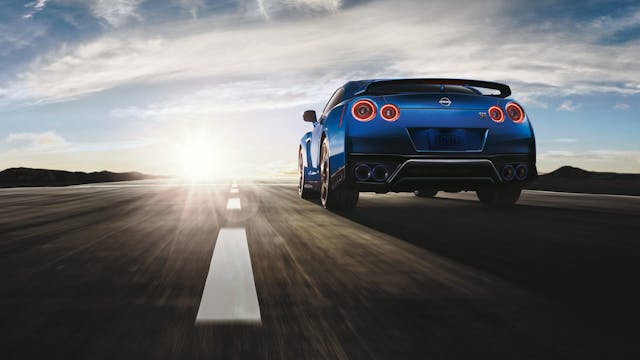

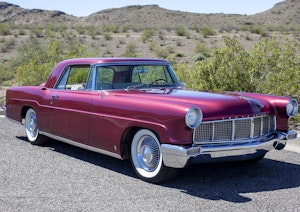
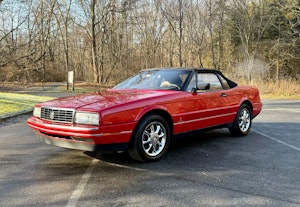
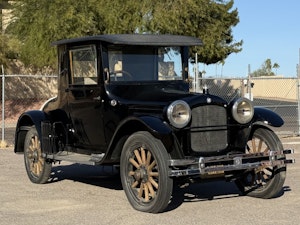




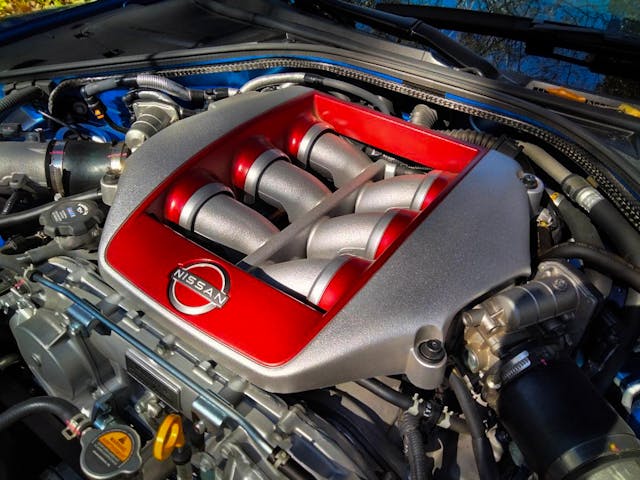
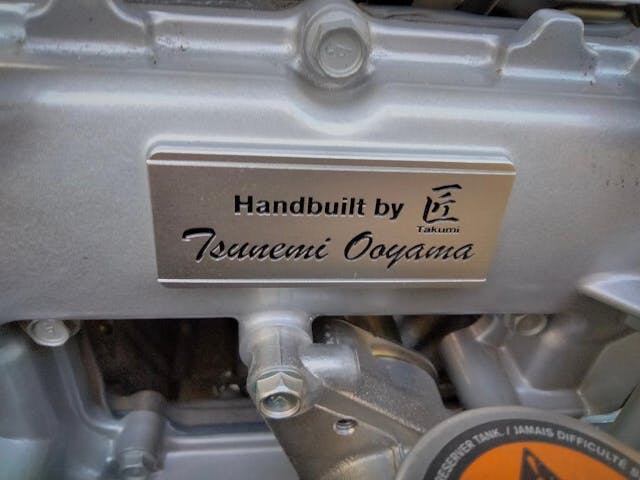












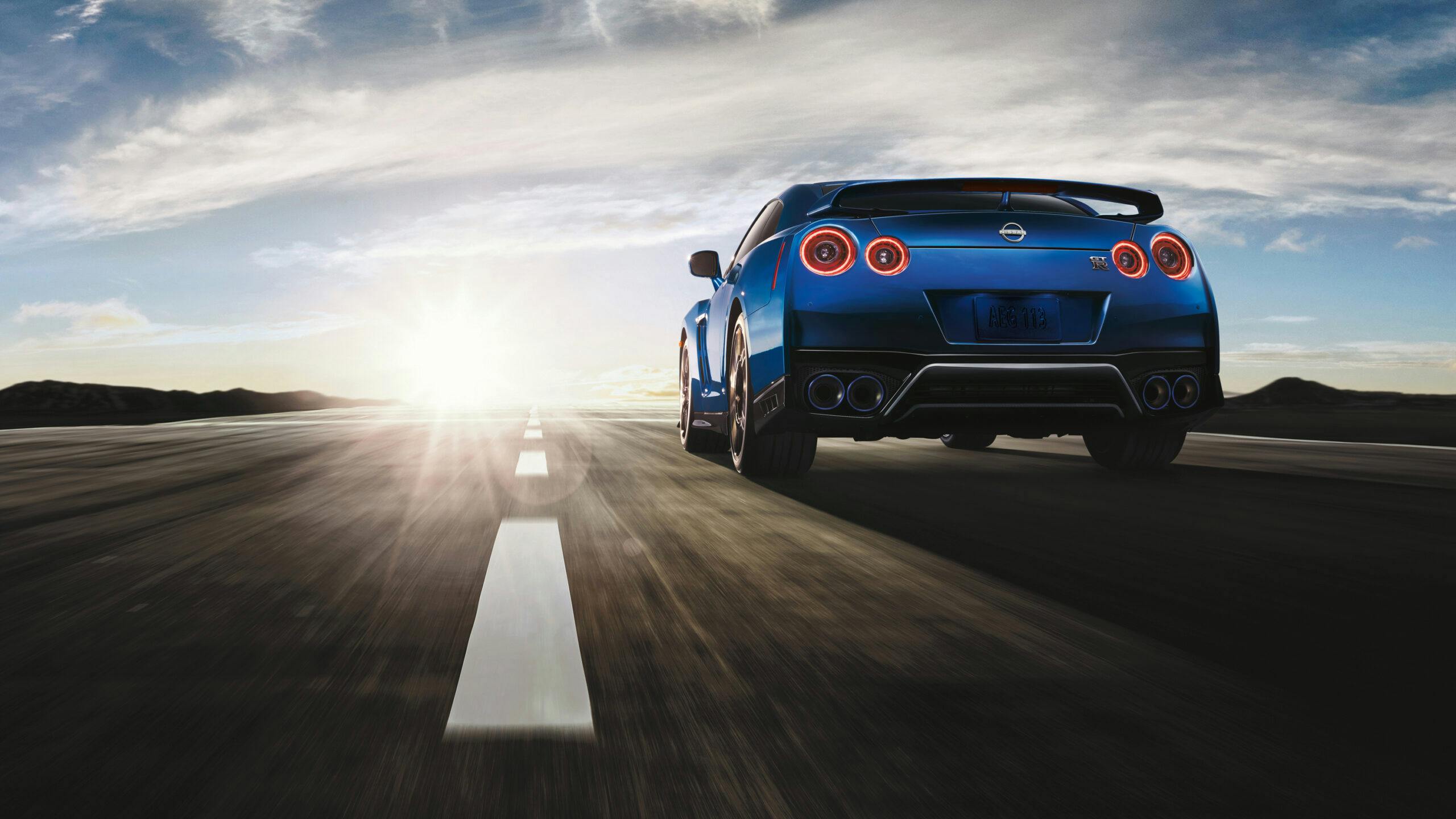
Interesting that they kept this car around, and aside from the FF franchise fan base, I never understood the appeal. They created “godzilla” and then dressed it up a “bambi” bodyshell. Same issue with the last gen of the Pontiac GTO, awesome car in a Cavalier looking body. This still looks like a body kit on an Altima coupe. I looked at one, sat in it, and didn’t even want to do a test drive (not that they offered), and walked away.
I wonder if Nissan would put a manual 6 spd transmission in a GT-R would the demand be there? I would buy one even if it was slower. The resale would be 20 % over the auto-shift !
It’s still a fun car but for some reason even I as a big old-school GT-R fan I have never felt a strong pull for these cars. I wonder if time and the current crop of cars might change my opinion.
I drove one of the first in the US, when a buddy bought one and loved it. Now an ‘old’ man at 60, I have renewed interest and look forward to my 2024.